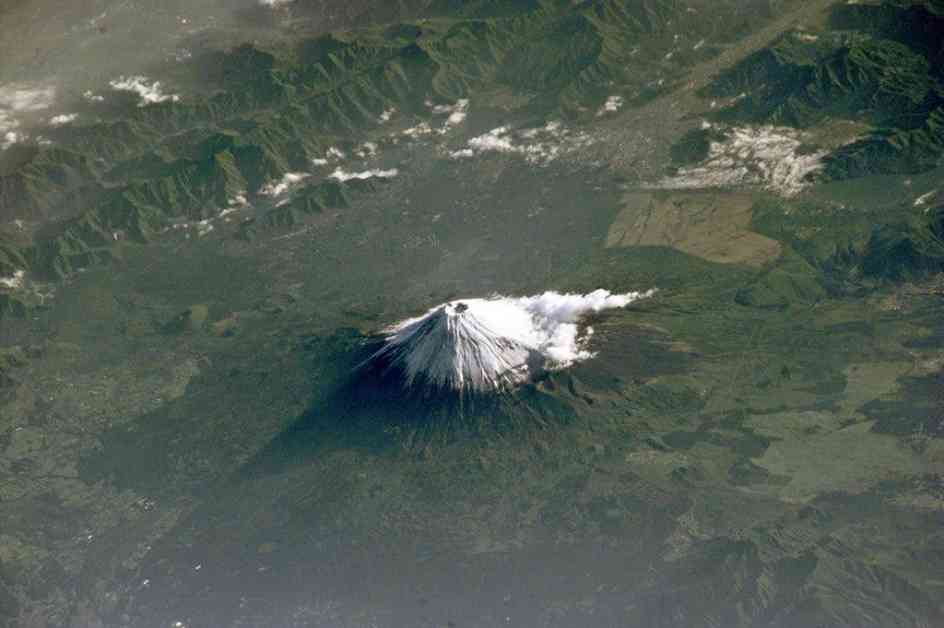Astronauts onboard the International Space Station (ISS) have captured stunning images of Mount Fuji, the highest mountain in Japan and an active stratovolcano. Standing at 3,776 meters, Mount Fuji is not only Japan’s highest peak but also a significant part of the country’s natural and spiritual heritage.
Thanks to advanced space technology, astronauts aboard the ISS can now observe Mount Fuji from a vantage point previously unimaginable. Equipped with powerful cameras and lenses, they are able to capture the majestic beauty of this iconic peak. By using oblique views and low sun angles, astronauts can highlight the three-dimensional essence of landscapes, particularly emphasizing the topographical features of mountainous regions like Mount Fuji.
One notable photograph taken from the ISS showcases Mount Fuji’s conical shape under the low afternoon sun, highlighting the gullies on its flanks and the shadows within the summit and side crater known as Hoei. The geology of Mount Fuji reveals its complex history as a stratovolcano, characterized by its layered structure built up over time through a series of eruptions.
Throughout its history, Mount Fuji has experienced numerous eruptions, with the most recent major one occurring in 1707-1708 during the Edo period, known as the Hoei Eruption. This eruption left a profound impact on the mountain’s shape and surrounding environment, depositing large amounts of ash and pumice. Today, Mount Fuji is classified as an active volcano, and Japanese authorities closely monitor it using a network of seismographs, GPS sensors, and other geophysical instruments to predict future eruptions and ensure the safety of nearby populations.
Located near the convergent boundary of multiple tectonic plates, Mount Fuji experiences significant seismic activity, including earthquakes and volcanic tremors. This ongoing subterranean movement underscores the importance of monitoring these activities for early warning systems and disaster preparedness.
The stunning images of Mount Fuji captured from space not only showcase its natural beauty but also emphasize the geological significance and potential hazards associated with this iconic peak. As technology continues to advance, astronauts onboard the ISS will have more opportunities to capture breathtaking views of Earth’s natural wonders, providing valuable insights into our planet’s geological and environmental processes.






